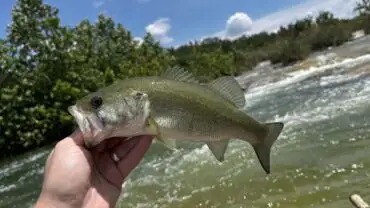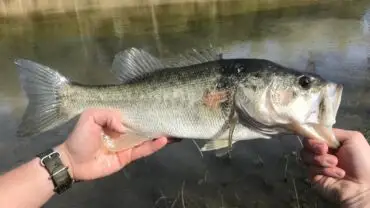Just as the summer turns slowly to fall, many anglers’ thoughts shift to one of the top saltwater fish in the country: the striped bass.
It’s become a rite of passage for anglers and their families to keep fishing well into the fall in search of striped bass, which is universally known for being choosy when it comes to bait and putting up a vigorous fight once hooked.
There are so many stories from anglers about either being out on a boat or fishing from a beach or pier and seeing the water begin to seemingly boil with large schools of striped bass, which are also affectionately known as stripers throughout the Northeast up to Nova Scotia and rockfish in the Chesapeake Bay region.
(NOTE: Commercial over-fishing has spurred regulations concerning limits and size of striped bass for recreational anglers in several states. Please check the regulations in your state before you start fishing)
Despite their popularity, stripers can be fussy fish, so don’t abandon ship—so to speak—if you’re not getting the anticipated action after you first cast your line. To catch quality stripers, you must use quality bait. In most cases, this means live bait instead of lures or artificial bait, although spoons, bucktails, jigs, and poppers can be effective.
A recent Reddit survey found that most anglers preferred live bait, followed by swimbaits and jerkbaits.
With the Fishbox App, a premium fishing and forecasting tool, you can tap into cutting-edge technology and data carefully sourced from experts to provide you with essential information for fishing in Florida. This includes the optimal times to fish, weather forecasts, and popular local spots where other anglers have had success catching Redfish.
Get your personalized fishing map
Answer a quick quiz and get your own personalized fishing map
Selecting the best bait depends on local conditions and what the stripers are feeding on that day. Don’t be wedded to one bait. Experimenting with different live baits and lures will typically help hook that striper for which you’ve been fishing.
Here’s a breakdown of the best bait to use for catching stripers:
Live bait
Bunker (also known as menhaden)
A freshly caught bunker is a universal choice among anglers for being the best bait for catching stripers, given the fact that it’s the natural prey. It’s best when it’s fresh, but frozen can also suffice.
If you’re targeting smaller or stripers, juvenile menhaden or “peanut bunker” usually do the trick. It’s optimal to catch some before your trip and keep them in an aerated bucket. For larger stripers, adult live bunkers are solid choices for fall fishing excursions. They can usually be found close to the surface of the water and can be caught with a standard bunker rig.
(Note: Keep in mind that stripers can be voracious at times and will hit on smaller stripers if used as bait.)
Eels
Very few anglers like to admit it, but using eels as live can be a major headache. They’re wriggly and slimy and take a little patience to deal with. That said, they have proven to be one of the best and most effective live bait for catching stripers. Eels can be used live or cut into smaller sections for use on large hooks.
One angler told us that one of the best ways to handle eels is to sprinkle some sawdust in the bottom of a bucket before depositing eels. The sawdust will “coat” the eels like breadcrumbs and make them much easier to handle. Others suggested putting them on ice, which slows down their movement.
(Note: Can’t find any live eels? Berkley Gulp offers artificial eels that work well in sizes ranging from 5-10 inches long.)
Clam
Fishermen from Virginia to Maine swear by fresh clams as one of the best baits for catching stripers. Some say they work best in rough waters or after storms, as the stripers sometimes find them with cracked shells and partially exposed meat. Since stripers don’t have teeth, it’s a straightforward way for them to find food. Readily available fresh or frozen, get your clams the morning of your trip or the night before, cut into chunks or strips, and watch the stripers devour them.
One tip we’ve heard several times from bait shops: Either leave clam bellies in the sun for a couple of hours before using them as striper bait to dry them out or place them on a thin bed of kosher salt overnight. Both methods will make it easier to manage them.
Herring
One of the striped bass’s favorite baits, herring can be used fresh or frozen and either used as bait whole or cut into chunks. Like mackerel, which we’ll cover in a minute, it’s the herring’s strong scent and oily meat that attracts the striper even from a distance. The best way to secure herring as bait is to catch or net it near docks or estuaries, or if you’re lucky enough, to net them during one of their runs, when seemingly hundreds travel together. It’s these runs that drive stripers wild.
And yes, pickled herring (the one found in jars in the supermarket) can also be used, but most find it cost-prohibitive.
Worms
Stripers can’t seem to resist worms when it comes to bait. They’re a tried-and-true method for hooking the sometimes-picky fish, but several anglers noted that unless you thread or “ball” them properly around your hook, you’re simply providing the stripers in your area with a tasty appetizer.
Several New York and New Jersey bait shops indicated that while there are several types of worms that work for stripers, bloodworms, cutworms, and sandworms seem to work best. Other varieties of worms, like night crawlers or earthworms, are ineffective for saltwater excursions, according to striper veterans.
Read also: How and Where to Catch Live Bait in Saltwater
Be forewarned: While worms are still super popular and often effective for hooking stripers, they are expensive. One bait shop in Surf City, N.J., recently quoted us a price of more than $27 for 12 bloodworms and more than $19 for a dozen sandworms.
Mackerel
Fatty, oily mackerel is a solid choice when selecting bait for stripers. It’s one of the more popular choices for bait, given its pungent scent, making it easy for stripers to track. For anglers, its thick flesh holds well on a hook, and about every part of the fish makes great bait.
Cut mackerel into strips or chunks, or use whole if they’re smaller in size.
Squid
Squid can be a good choice when stripers are feeding on smaller prey. It’s readily available at most bait shops, and while some anglers advise using only 3–4-inch strips, it’s often a dependable choice for hooking stripers. It can also be used as rings, but strips are preferred to mimic a swimming motion.
Dead bait
Check with local anglers and bait shops to see what stripers are hitting on in your region. Depending on the availability of local baitfish, besides the live baits mentioned above, chunks of shad and hickory shad can often be used as bait effectively.
Get your personalized fishing map
Answer a quick quiz and get your own personalized fishing map
The Fishbox App evaluates weather and water conditions, along with insights from local fishermen, to deliver accurate and timely weather and fishing forecasts. This helps you plan the best time for your fishing trip. Whether you’re a seasoned angler or just starting out, having more information means better chances of success and more fruitful fishing experiences.
Artificial Lures and Baits
It’s difficult to pinpoint the best lures and baits for use with striper fishing, given that there are so many variables to be considered. Everything from sea conditions, climate, season, and temperature to the location and undersea geography in which you are fishing often comes into play.
With all the variables in mind, there are some dependable, time-honored lures and baits for catching stripers:
Hard/Swim Baits
On rare occasions, we use artificial bait or lures, but we prefer those that closely mimic the swimming motion of a striper’s prey. Your best bet is to focus on those lures that are 5-6 inches in length and weigh approximately an ounce. Color selection varies, but ivory, white, or chartreuse are good colors to start with, along with shiny underbellies.
According to several East Coast bait shops, lures such as the Yo-Zuri 3D Crystal Minnow and SaltPro (SP) Minnow are effective, particularly in current with a slow retrieve. Both are long casting baits that present an erratic side-to-side swimming motion that attracts stripers.
Top Water Lures
Best used in the fall when stripers are actively feeding, topwater lures “swim” on the water’s surface, causing a small wake to attract stripers. While there are many categories of topwater lures, including poppers, sliders, and floating jerk-baits, we’re partial to poppers and floating jerk baits. Whether either stick or squat style, they should be 5-9 inches long and effectively mimic the swimming motion of injured prey.
Read also: The Best Bait and Lures for Largemouth Bass Fishing
Poppers are a solid choice when targeting stripers. They’re typically squat or fat bodies and the better ones create a rattle when shaken, enticing stripers to strike by appealing to their natural prey drive.
Many anglers swear by floating jerk lures when stripers are finicky and won’t hit on noisy topwater lures. They’re called jerk baits because you actively have to jerk—or twitch –your rod to make the lure swim across the surface of the water like a confused baitfish before darting away in an attempt to escape the striper. Some anglers say they’re a little difficult to cast because they’re lightweight, but that issue can be solved with the addition of a jig head or a weighted hook.
Two lures consistently mentioned as being best of category in floating jerk and popper lures are the Lunker City Slug-Go (floating jerk) and the Nomad Tackle Design Chug Norris (popper)
Spoon or Blade lures
Also designed to mimic the swimming motion of baitfish, metallic spoon lures –which resemble the kitchen utensil–have been around for a long time yet remain popular staples in anglers’ tackle boxes when stripers are being targeted.
The type of spoon lures varies from season to season. Lighter spoons are frequently used in the spring and summer, while autumn anglers typically opt for heavier spoons that can sink deeper and present a larger, wider profile (which look like mullet or menhaden).
Another variable: Depending on where the stripers are biting, trolling, casting, and jigging spoons are all methods employed.
We usually prefer jigging spoons and having them bounce off the bottom, along with fast cranking and a few rod tip jerks to attract fast-moving stripers.
Spoon lures can be combined with other artificials, such as bucktail. Some anglers even opt for short lengths of surgical tubing in bright colors. Whether they are modified or not, spoons are an effective lure for catching stripers inshore and offshore.
A good place to look for spoon lures for stripers? We’re partial to Nicholas Lures and the Ben Parker Magnum line, which range in size from 6.5-9 inches long and 2.5-4.5 ounces.
Jigs
Primarily used for fishing for stripers in deeper waters, jigs have proven to be a dependable option when looking for stripers, thanks to their versatility. They vary in color, size, and weight and can be used right below the water’s surface or in deeper depths.
One of the most time-honored lures, the bucktail jig, is considered a tackle box staple because of its ability to look like several types of striper prey. Whether it’s small baitfish, squid, or shrimp, a bucktail with white fur/feathers is typically an attractive target for stripers.
Larger bucktails, with lead heads weighing as much as 3 ounces, work best for larger, deep-water stripers. The smaller sizes, weighing as little as a quarter ounce, work better for smaller fish in shallower water. They can also be employed for trolling.
Soft plastic jigs are also a popular option, whether they’re twitch baits, paddle tails, curly tails, or swim baits (which stripers seem to prefer due to their resemblance to herring, sand eels, and bunker). They are best employed from the surface to mid-water, and in many cases, the lure has been designed to provide a specific action, shortening the angler’s learning curve. That said, making the jig swim by varying your rate of retrieval, pausing, hopping, and twitching from time to time will typically pay dividends. So, while there are many choices when it comes to the best bait for striped bass—everything from live eels to brightly colored surgical tubing enters the conversation—the smartest choice to make is being adaptable when going for this sometimes-finicky fish. Bring a small variety of bait with you, along with the appropriate gear to change bait on the fly, and before long, you’ll have hooked into one of the most legendary saltwater fish in the country.



